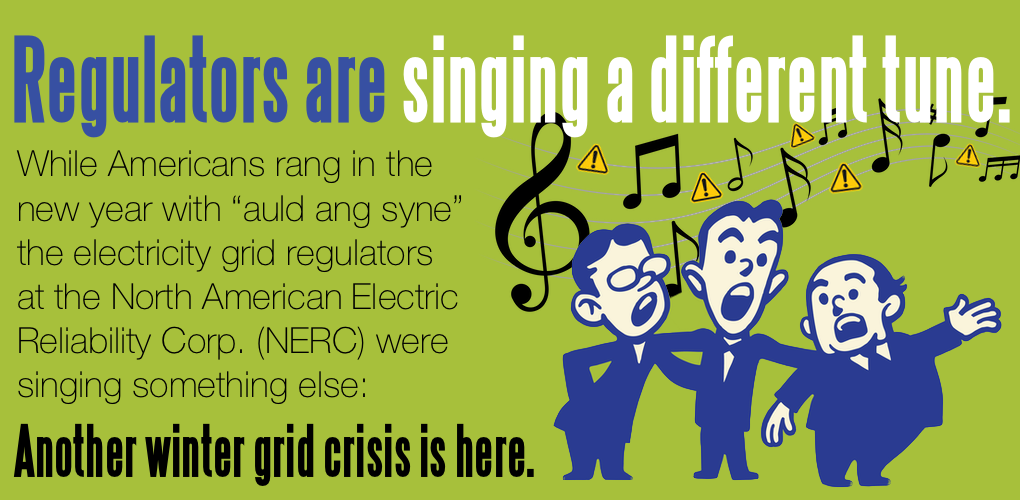
Beginning the Year in Crisis
While Americans rang in the new year with “auld lang syne,” the electricity grid regulators at the North American Electric Reliability Corp. (NERC) were singing a very different tune: another winter grid crisis is here.
On New Year’s Eve Jim Robb, NERC’s president and CEO, took to YouTube with a strong warning to the power and gas sectors to prepare for winter storms and biting cold. “I’m asking everyone in the electricity supply chain, from natural gas producers to pipeline operators, to system operators, to power generators and the utilities themselves, to take all appropriate actions to ensure that we can maintain an uninterrupted supply of electricity to customers,” Robb said.
NERC fears that the winter conditions descending on much of the nation are alarmingly similar to those that have forced grid emergencies from Texas to the Northeast in years past that left millions without power and heat, and even in the worst cases resulted in lives lost.
NERC warned in its recent Winter Reliability Assessment that the nation could face serious power supply threats with severe cold. This January is shaping up to be exactly that feared scenario.
NERC is not only deeply concerned by the nation’s supply of power as demand rises and reserve margins shrink – thanks to the Biden EPA’s regulatory assault on the coal fleet and the slow addition of new generating capacity and enabling transmission infrastructure – but also by an ever-greater reliance on a deeply vulnerable natural gas system.
The Weakest Link
Again and again, when the gas system has been needed most during bitter cold, it hasn’t passed the test, and shockingly little has been done to winterize it against the very conditions making this January a bitterly cold one.
Consider what happened just two years ago when Winter Storm Elliot forced the largest recorded electricity load shed in the history of the Eastern Interconnection. A remarkable 90.5 gigawatts (GW) of generating capacity in the Eastern Interconnection, enough to power more than 60 million homes, failed to run or operated at reduced capacity during the storm. Gas-fired capacity accounted for 63% of the outages with gas plants unable to get fuel from frozen pipelines and gathering systems.
NERC has warned that there is “little to no information to indicate that upstream gas producers, gatherers, and processors have improved winterization of their operations.”
While NERC has regulatory responsibility to provide mandatory winterization standards and oversight for the power sector, it has no such authority to do so for the gas industry. In fact, no regulatory body does. If a chain is only as strong as its weakest link, the gas vulnerability imbedded at the heart of the nation’s energy systems is a ticking time bomb.
Yet, despite this well know vulnerability, regulatory pressure has been forcing utilities to double down on natural gas when it’s the fuel source history – and clear warnings from power sector regulators – tell us the power system should be hedging against during bitter cold.
Bolstering Fuel Diversity
Fuel-secure coal generation has come to the rescue of regional grids in the past but state energy mandates and the Biden regulatory burden – even if overturned – threaten to push more essential capacity offline. The nation’s coal lifeline is now running out of rope.
The incoming Trump administration is inheriting a multi-dimensional power supply crisis. Power demand is exploding, new generating capacity and energy infrastructure are failing to come online at speed, and the gas system appears one polar vortex away from catastrophe. A silver bullet fix doesn’t exist but a critical first step towards stability is a policy pivot to protect dispatchable fuel diversity.
Several utilities are already extending the lives of coal plants, pushing back proposed retirement dates. A new federal policy that freezes plant closures across the board would give the nation’s grid operators and the nation’s increasingly shaky power supply much needed support. Simply put, essential, fuel-secure power plants should not be coming offline without replacement capacity – that can provide the same security – built and connected to the grid. That’s a New Year’s resolution worth keeping.
- On January 8, 2025
